PRODUCTIVITY LIFT WITH HIGH STOCKING RATE
By Laura Griffin, Stock & Land, June 19, 2014
FIONA Conroy and Cam Nicholson get the most out of their Knewleave beef and sheep farm at St Leonards, by having a high stocking rate and carefully managing pastures.
At a farm field day last Thursday, about 80 farmers and service providers from across Victoria, South Australia and NSW heard the couple collected and used data to inform decisions about animals and agronomy.
As a progeny test herd for Team Te Mania, each calf is weighed within its first 24 hours of life and again at 400 days, when they are also ultrasound scanned for eye muscle area, P8 fat, rib fat and intramuscular fat, with the information sent to Breedplan.
“The genetics of the herd has made massive gains through the use of AI (artificial insemination) and performance recording,” said Ms Conroy, who manages the herd.
For example the feedback from the Rangers Valley feedlot was Knewleave steers and others from long-term Team Te Mania herds were in the top five per cent in terms of profitability for the feedlot, she said.
Production data shows the couple has more than doubled the amount of beef produced per ha from 1999-2000 to 2012-2013, although income has not always followed as a high stocking rate is more expensive to maintain in poor season when pastures cannot feed cattle and they have to buy supplementary feed.
Breeding numbers fluctuate between 190 and 220 depending on the season and females need to perform to remain in the herd, Ms Conroy said.
All cows are single sire mated for six weeks for spring calving and heifers are synchronised for two rounds of AI.
All females are ultrasound pregnancy tested six weeks after the bulls come out and all empty mature females as well as any females that have an assisted calving or fail to rear a calf are also sold.
Maiden heifers not in-calf to two rounds of AI are rejoined to a bull for autumn calving and sold with calves at-foot in the Team Te Mania AuctionPlus sale.
Remaining cows are sold at seven years of age, when they are still economically viable to others, Ms Conroy said.
The herd has a MN3 status as being free from Johne’s disease, which has allowed cows to be sold to studs as recipients or to other Johne’s Disease Market Assurance Programs assessed herds.
As an agricultural consultant, Mr Nicholson joked there was pressure for the pastures to look good.
The high stocking rate (23.3DSE/hectare in 2012-13) and a drive to produce as much of their own feed as possible means the family pushes the farm hard, but they also take care of land by improving the soil biology and structure, planting trees and revegetating water ways to help to control erosion, Mr Nicholson said.
Good pasture management comes down to getting the fundamentals of soil conditions, grazing methods (including leaving enough time for the plants to recover) and pasture species selection right, he said.
Mr Nicholson has fenced paddocks by soil type so he can target actions, for example the paddocks have been sown to different dominant perennial pasture species of phalaris, perennial ryegrass, tall fescue or lucerne, with sub-clover base.
Each paddock’s soil is tested every three years, so he can chose the best suited fertiliser, whether inorganic or chicken manure.
An average 550 millimetre of rainfall a year and virtually no frosts means good winter pasture growth is possible on the 285ha farm.
Mr Nicholson took the attendees to a series of paddocks that showed it took years to get soil structure, biology and nutrients as he wanted them via grazing and herbicide manipulation.
The couple also has sheep, mainly Merinos and some crossbreds, and the combination of sheep and beef was very useful for pasture management and worm control, he said.
The sheep graze on up to 200ha of neighbouring crop stubbles during the summer.
To run the farm, while Mr Nicholson works full-time off-farm and Ms Conroy works three days a week off-farm, the operation has been set up to require minimal labour, including all-weather laneways, single person operation yards, minimal supplementary feeding and good water supply to each paddock.
The set up means the couple has reached another goal of enjoying the time they do get to spend on the farm.
Raw Ag Podcast, Episode 3 September 2020
Producers Outline their Carbon Neutral Path at Red Meat, Stock and Land, November, 2019
Genes the Perfect Fit, by James Wagstaff, The Weekly Times, October 2014
Measure, Monitor and Meet the Market, MLA Feedback magazine, September 2014




